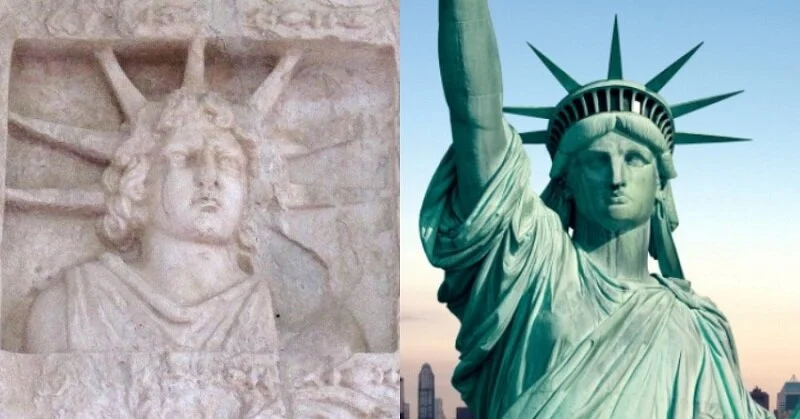The Statue of Liberty is a colossal neoclassical sculpture on Liberty Island in New York Harbor within New York City, in the United States, and was a gift from the French to the Americans.
Left: Statue of Apollo - Right: Statue of Liberty
It was designed by the French sculptor Frédéric Auguste Bartholdi and its metal framework was built by Gustave Eiffel, known for the construction of the Eiffel Tower The statue is a figure of Libertas, a Roman goddess of freedom. She holds a torch above her head with her right hand and carries a tabula ansata with the inscription JULY IV MDCCLXXVI (July 4, 1776 in Roman numerals), the date of the Declaration of Independence of the United States, in her left hand.
The argument linking the Statue of Liberty to ancient Greece is based on the fact that the head of the statue bears similarities to the figure of Apollo, in the museum of Ancient Corinth, and also that the American School of Classical Studies did the first excavation in Ancient Corinth The construction of the statue, however, precedes the discovery of the triptych plate of Corinth, since the archeologists of the mission began work in 1896, many years after the construction of the head.
According to another version, the statue has similarities with the Colossus of Rhodes. The Greek statue was one of the seven wonders of the ancient world, was 30 meters high and was located at the entrance of the port of Rhodes. It symbolized the sun and held a torch.
In fact, there is no direct connection between them, but it seems that ancient Greek esthetics had a profound influence on world culture and especially on Western thinking.









